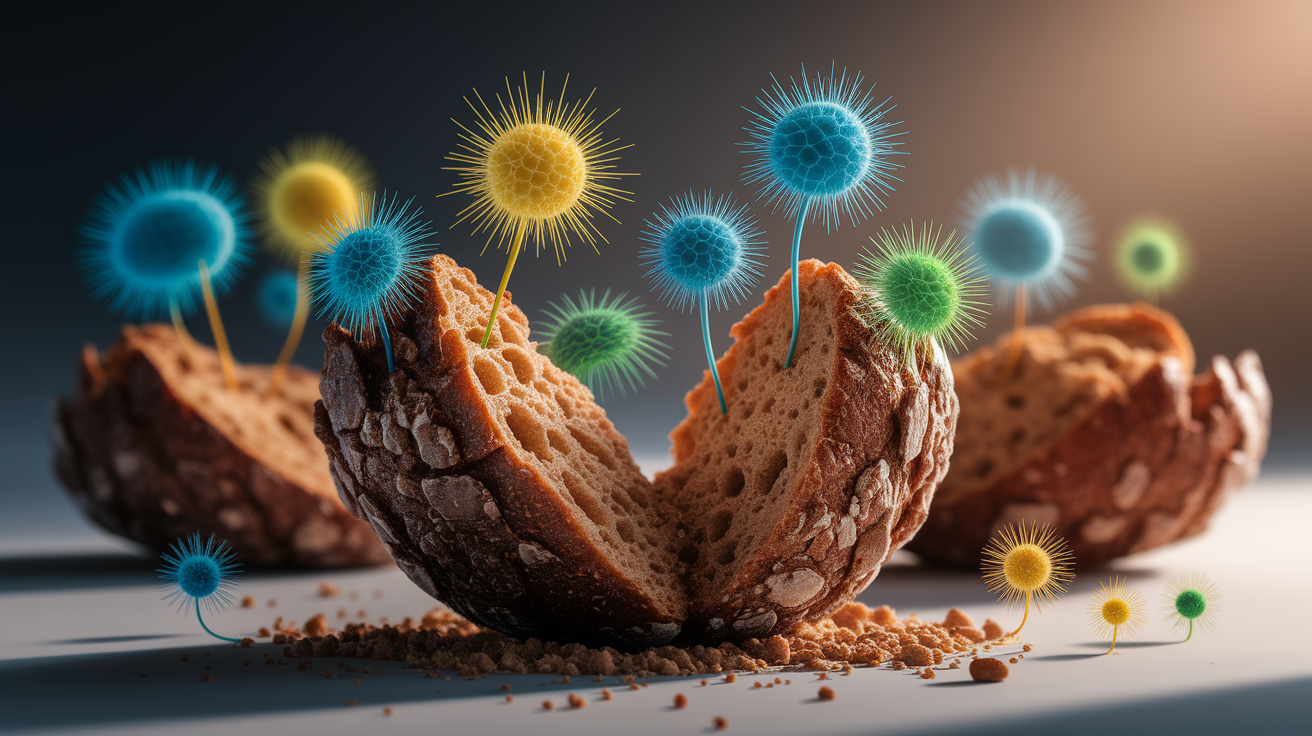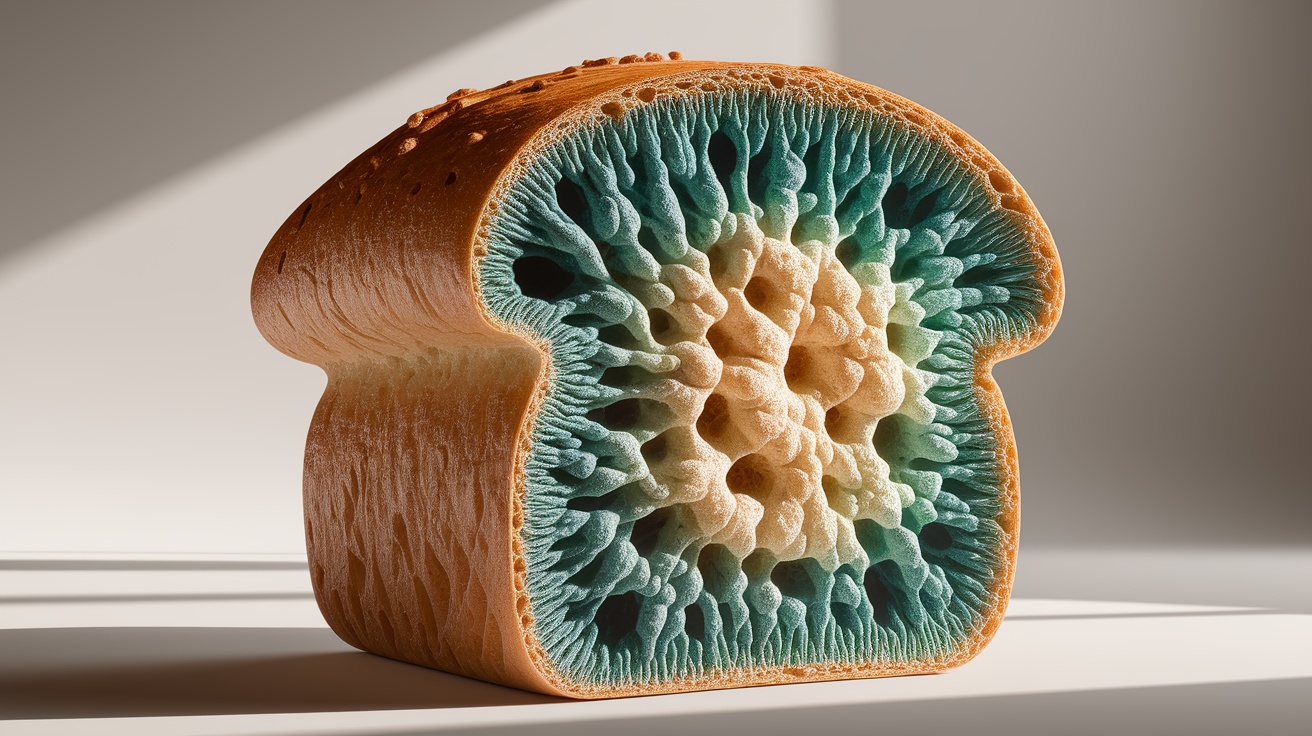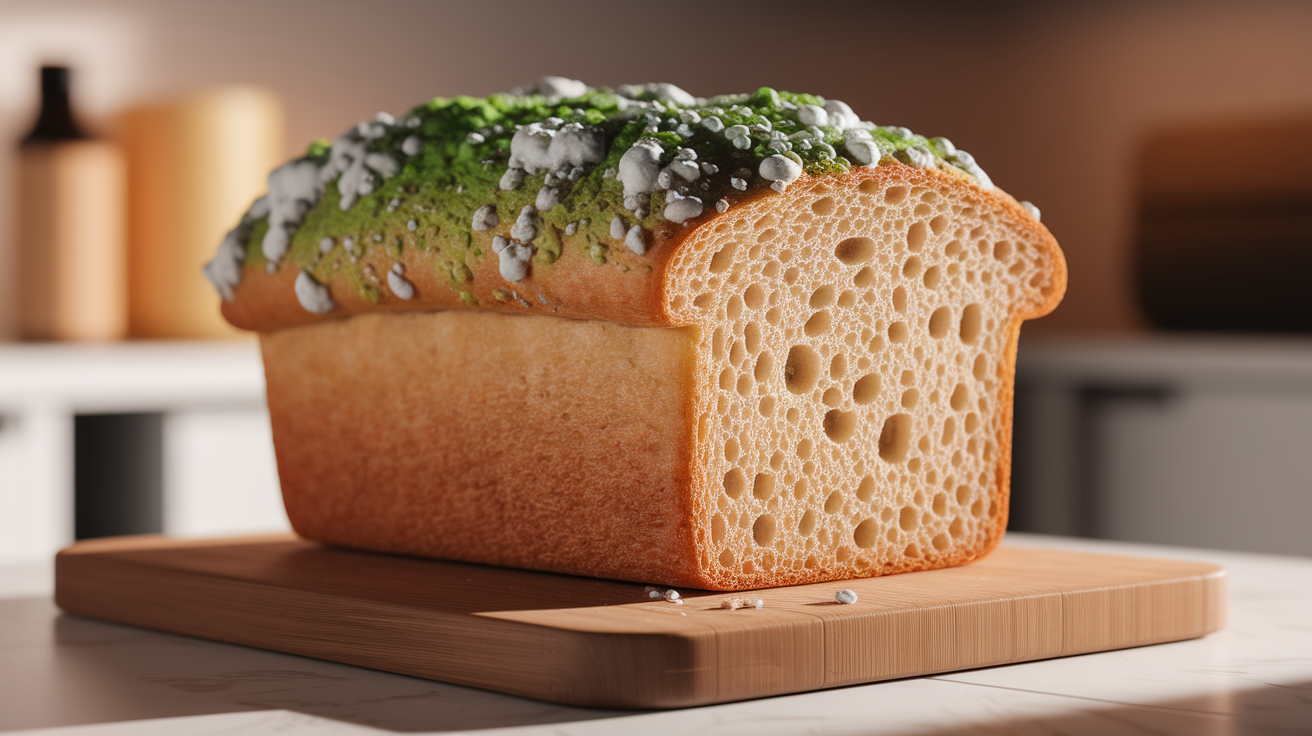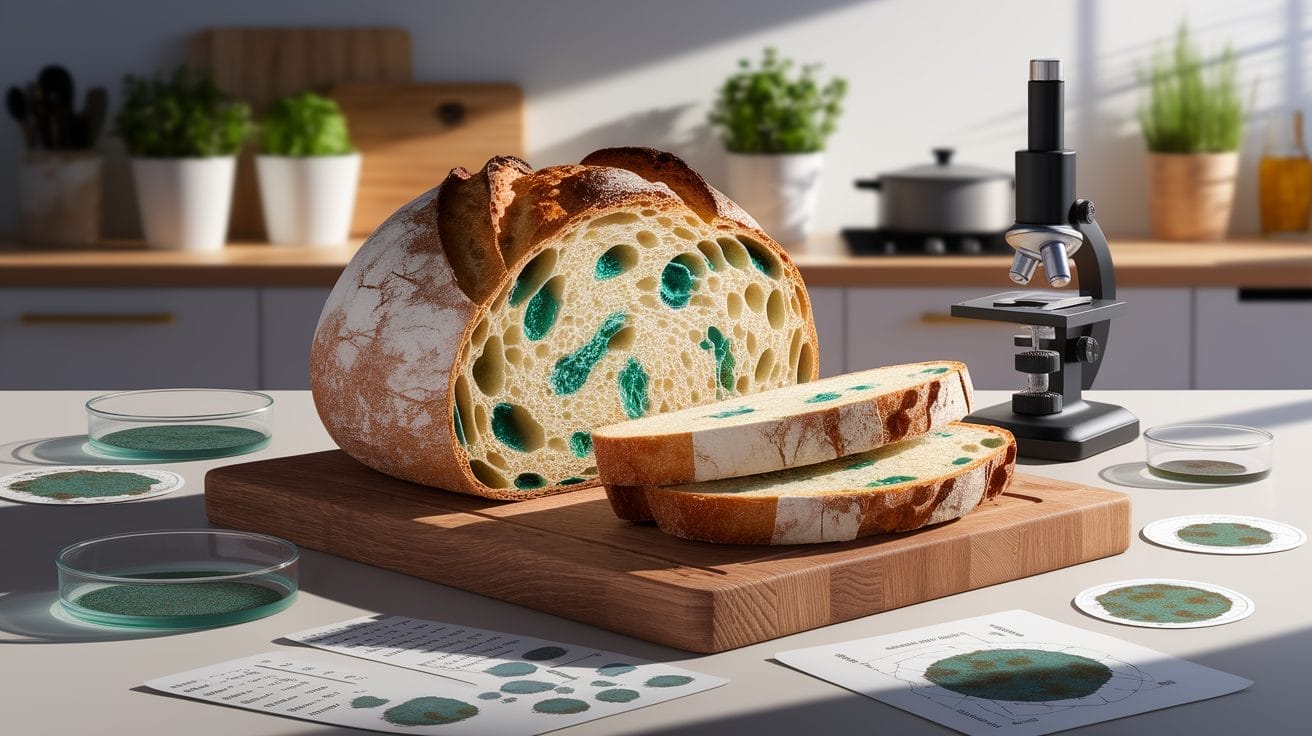Crumbs and Spores: The One-Sentence Answer
Bread molds because microscopic fungal spores land on it, find the right mix of moisture, nutrients, and temperature, and quickly grow into fuzzy colonies.

What Is Bread Mold?
Bread mold is a type of fungus, most famously Rhizopus stolonifer, that thrives on the nutrients in bread. Fungi can’t make their own food like plants; instead, they feed on organic material around them.

Bread is a perfect meal for mold because it contains carbohydrates (starch) and proteins (gluten), which mold can break down and absorb. The air around us is full of invisible spores, and when they land on bread in favorable conditions, they germinate and start growing. If you’ve ever noticed green, white, or black fuzz creeping across a loaf, that’s a visible colony of mold taking over. For a detailed explanation of the process, check out this overview on how mold grows on bread.
The Perfect Conditions for Growth
Like any living thing, bread mold needs certain conditions to thrive. The three big factors are:

- Moisture: Bread seems dry after baking, but the inside retains water. In plastic bags, this moisture migrates outward, making a slightly damp surface that mold loves.
- Temperature: Mold grows best between room temperature and about 30–37°C (86–98.6°F). Warm, humid kitchens are ideal habitats.
- Darkness and Airflow: Mold prefers shaded, enclosed areas. Airtight plastic bags trap humidity, while paper bags allow moisture to escape, slowing mold growth.
Cold storage alters the mold timeline dramatically — refrigerators slow its growth, and freezers halt it entirely. Learn more about how temperature and humidity play a role at Foodcrumbles.
How Mold Spreads on Your Bread
Once spores touch down and conditions are good, the fungus sends out fine threads called hyphae into the bread. These threads form an interconnected network called mycelium. The mycelium secretes enzymes that break down starch and gluten into simpler molecules the mold can digest.

From the mycelium, tiny stalks called sporangiophores grow upward. At the tips, they produce spores (often colored green, black, or bluish depending on the species, such as Rhizopus, Aspergillus, or Penicillium). These spores detach and travel through the air to start the process again.
Want to see how this looks up close? The Sciencing guide breaks down the structure and growth mechanism beautifully.
Practical Prevention Tips
Here are some easy, science-backed ways to keep your bread fresher for longer:

- Cool Storage: Store bread in the fridge to slow mold development. For long-term storage, freeze it.
- Proper Packaging: Use paper bags for short-term storage to let moisture escape, or airtight containers for frozen bread.
- Lower Humidity: Keep bread away from steamy environments like next to a kettle or dishwasher.
- Purchase in Smaller Quantities: Buy what you’ll eat in a few days; less leftover bread means less risk of mold.
- Avoid Contamination: Use clean hands or utensils when handling bread to avoid introducing extra spores.
Farewell to Fuzzy Slices
Moldy bread can be fascinating under a microscope, but it’s not something you want on your lunch plate. By understanding the simple science — spores land, find food and moisture, and then spread — you can make smart choices to extend your bread’s shelf life. Whether you’re storing your sourdough in a paper bag or keeping sandwich bread in the freezer, a few small steps can mean the difference between a fresh slice and a fuzzy one.
So next time you spot that green spot creeping across the crust, you’ll know the story behind it — and how to stop the next chapter before it starts.













